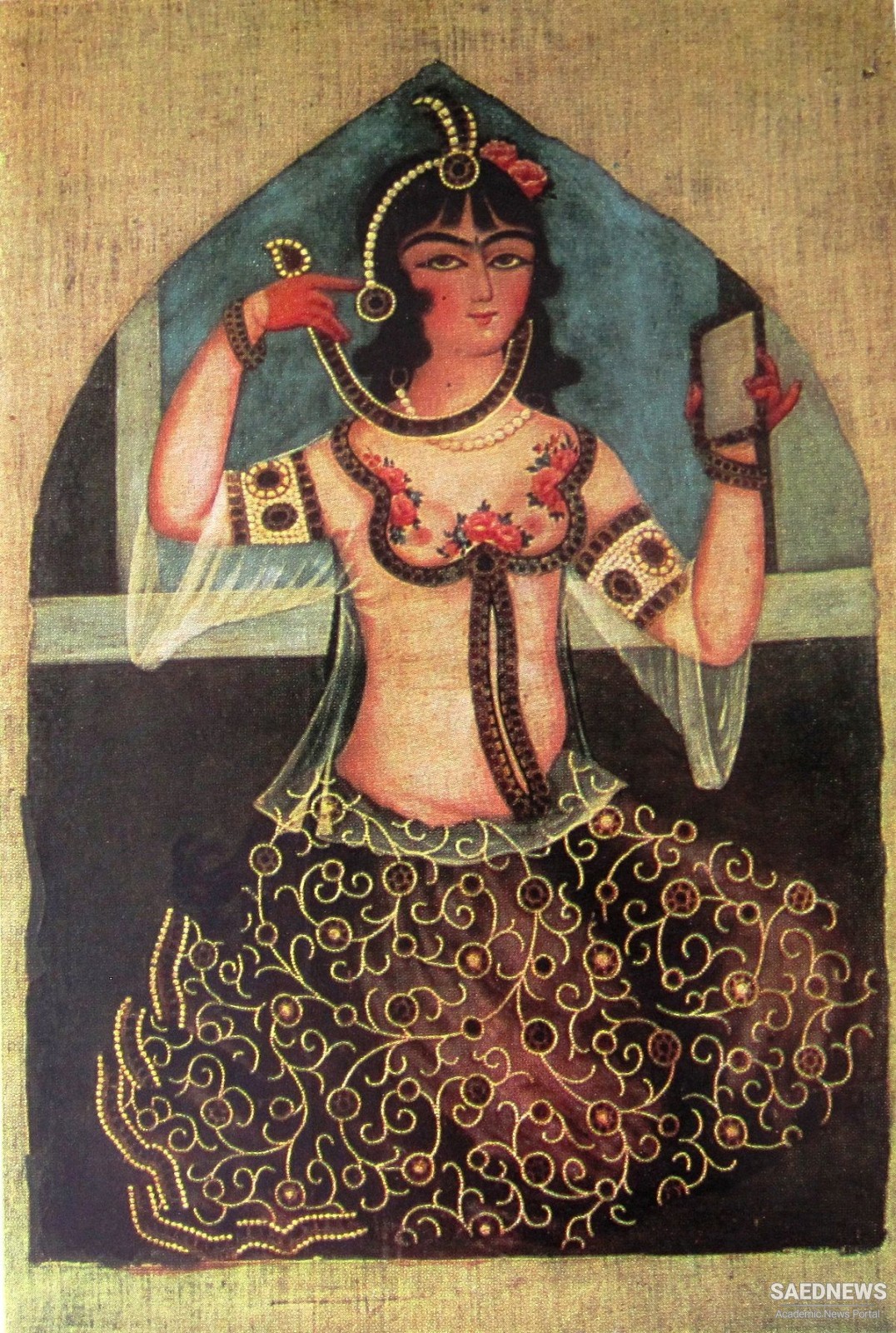The modern cultural developments opened the way for artists and artisans of Isfahan to take the brave new step of using images of Farangi women directly as an original print rather than copying them first from a European prototype. Throughout the nineteenth century, Europeans visited Iran in ever greater numbers, first as diplomats, then as consultants, traders, and adventurers. Many of them published accounts of their voyages, and these provide valuable records of what was to be seen at that time, although of course rendered in a thoroughly subjective manner.
Fascinatingly, a survey of these sources shows that European prints were to be found "recycled" on the very walls of Iranian houses, in the royal palaces, and in governors' residences all over the country. We know that cheap prints from Europe were available for sale in Iran's bazaars; suddenly, mass-produced for European as well as Iranian consumers, the images traveled easily because of their modern appeal and great affordability. Although indeed printed onto paper, these images of fashionable ladies did not have to be confined between the covers of a book or newspaper, but could now be used and re-used in many other creative contexts. This amazing visual mobility is one of the positive outcomes of the modern age in Iran, as elsewhere. The importation of prints from different European countries over a long span of time coincides with a period during which vast amounts of attractive utilitarian goods of many different kinds were imported into Iran.
The period from the mid to late 19th century, when these prints were made, coincided with the development of color printing in Europe, when artists at all levels experimented with the new media and produced thousands of artworks - the subject of many of them, of course, being beautiful women. The development of image-printing, first through lithography, followed by chromolithography in the third quarter of the 19th century, and then by offset printing, was so exciting that it spurred artists in all fields, including painters, print-makers, and fashion designers to produce countless images of women, some of which reached Isfahan.
The variety of the prints produced in Isfahan of beautiful women resulted in a great amount of printed material, including hand-colored posters, postcards, lithographs, chromolithographs, and offset prints made by French, English, and other European artists. Images were produced for a new range of uses: fashion-plates were sold one page at a time, to publicize new dress designs. Advertisements were often illustrated, demonstrating a new clothing fashion being used to promote a product, including anything from soap to shoes. Popular series of royal portraits were produced cheaply, and in huge print-runs. An exciting modern event, such as a hot-air-balloon ascent or the opening of a grand new building, would be commemorated with a popular print. This was an age of mass media; the explosion in the print production of commercial images was unprecedented. Cheap images were produced rapidly by artists who usually remained anonymous, and popular images and compositions were re-copied and pirated on a massive scale. Although print publishers often included the name of the artist and lithographer at the bottom of the image, the compositions themselves were regularly copied or adapted from other sources.


 Cultural Core of the Food: Knowing the Other through Eating
Cultural Core of the Food: Knowing the Other through Eating














































